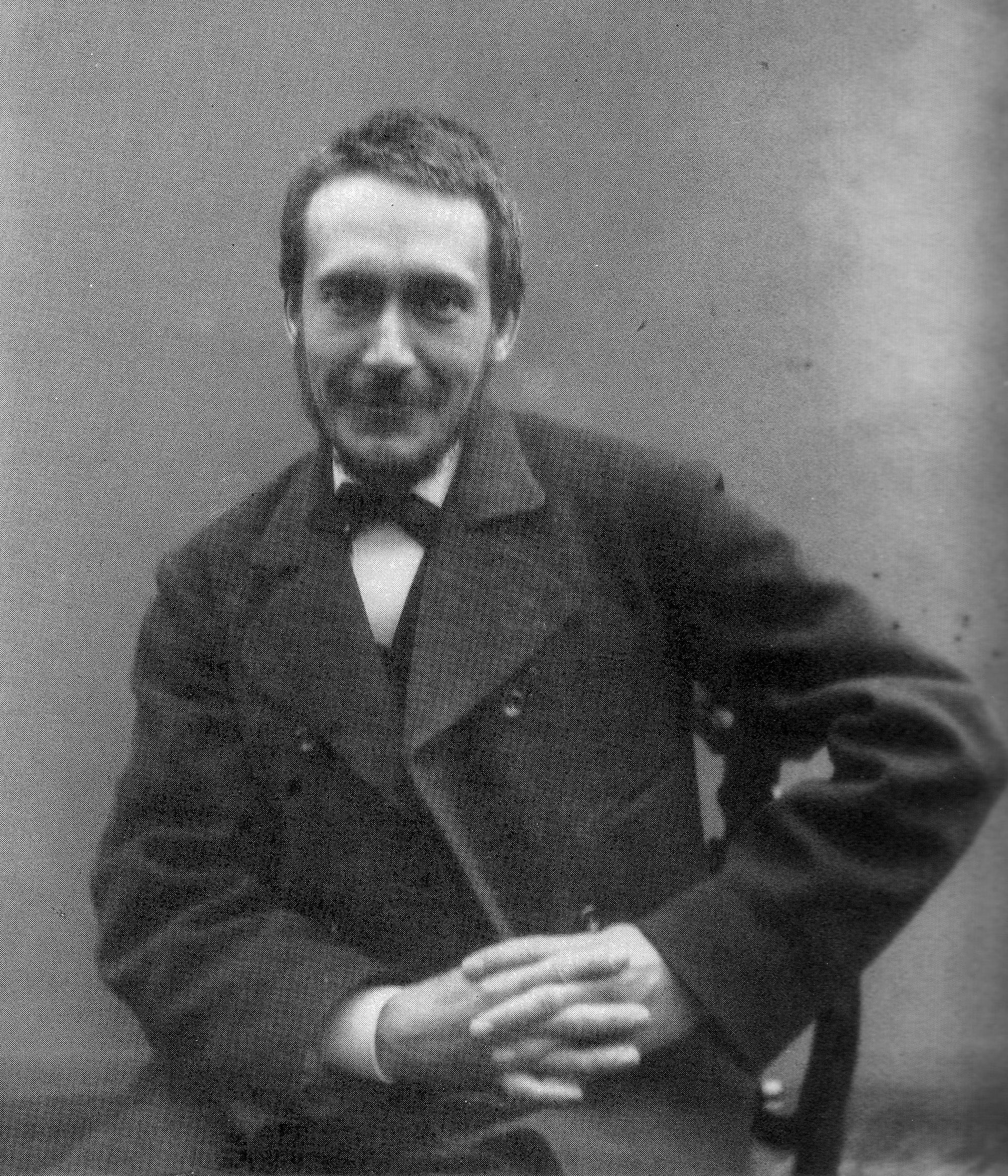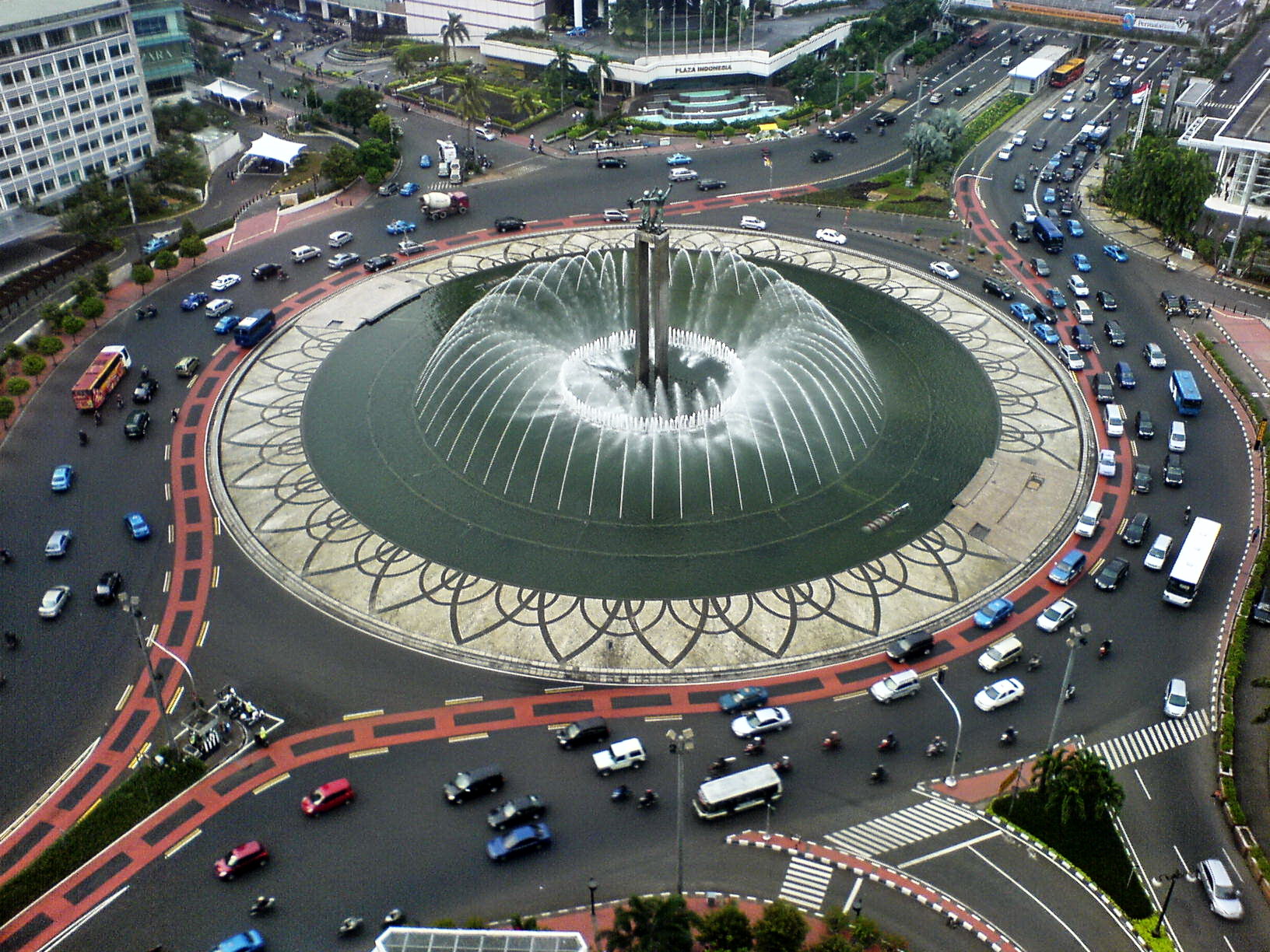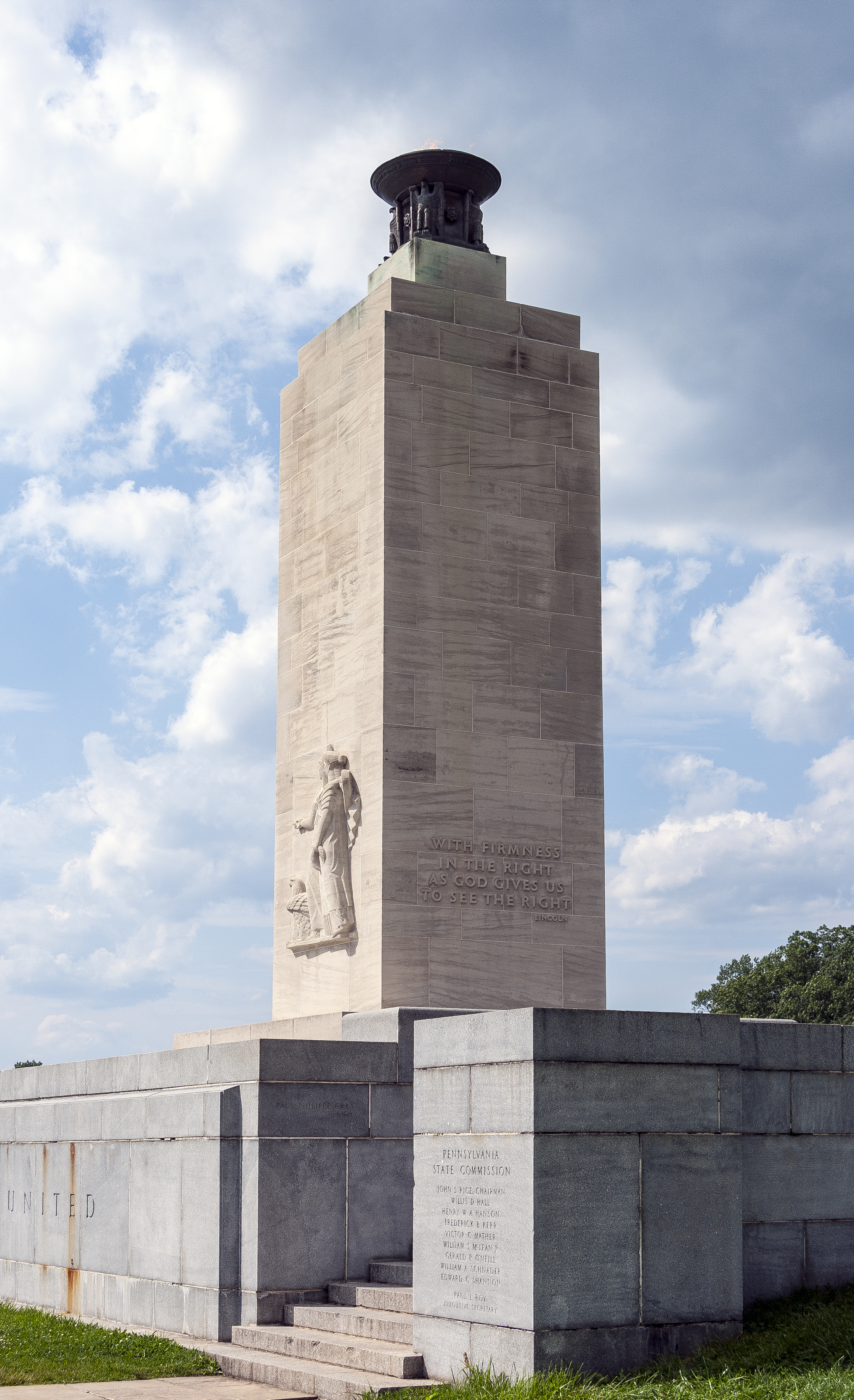|
Benjamin Franklin Parkway
Benjamin Franklin Parkway, commonly abbreviated to Ben Franklin Parkway and colloquially called the Parkway, is a boulevard that runs through the cultural heart of Philadelphia, the nation's sixth-largest city as of 2020. The parkway is named for Benjamin Franklin, a Founding Father greatly affiliated with the city and the successful American Revolution, which led to American independence. The mile-long parkway cuts diagonally across the grid plan pattern of Center City's northwest quadrant, starting at Philadelphia City Hall, curving around Logan Circle, and ending before the Philadelphia Museum of Art. History 20th century In a city famous for its urban planning, the Parkway represents one of the earliest examples of urban renewal in the United States. The road was constructed to ease heavy industrial congestion in Center City and to restore Philadelphia's natural and artistic beauty, as part of the City Beautiful movement. The vision for a grand parkway came from r ... [...More Info...] [...Related Items...] OR: [Wikipedia] [Google] [Baidu] |
Philadelphia Museum Of Art
The Philadelphia Museum of Art (PMA) is an List of art museums#North America, art museum originally chartered in 1876 for the Centennial Exposition in Philadelphia. The main museum building was completed in 1928 on Fairmount, a hill located at the northwest end of the Benjamin Franklin Parkway at Eakins Oval. The museum administers collections containing over 240,000 objects including major holdings of European, American and Asian origin. The various classes of artwork include sculpture, paintings, prints, drawings, photographs, armor, and decorative arts. The Philadelphia Museum of Art administers several annexes including the Rodin Museum, also located on the Benjamin Franklin Parkway, and the Perelman Building, Ruth and Raymond G. Perelman Building, which is located across the street just north of the main building. The Perelman Building, which opened in 2007, houses more than 150,000 prints, drawings and photographs, 30,000 costume and textile pieces, and over 1,000 modern ... [...More Info...] [...Related Items...] OR: [Wikipedia] [Google] [Baidu] |
Urban Renewal
Urban renewal (sometimes called urban regeneration in the United Kingdom and urban redevelopment in the United States) is a program of land redevelopment often used to address real or perceived urban decay. Urban renewal involves the clearing out of areas deemed blighted, often in inner cities, in favour of new housing, businesses, and other developments. 19th Century The concept of urban renewal as a method for social reform emerged in England as a reaction to the increasingly cramped and unsanitary conditions of the urban poor in the rapidly industrializing cities of the 19th century. The agenda that emerged was a progressive doctrine that assumed better housing conditions would reform its residents morally and economically. Modern attempts at renewal began in the late 19th century in developed nations. However, urban reform imposed by the state for reasons of aesthetics and efficiency had already begun in 1853, with Haussmann's renovation of Paris ordered by Napoleon III. T ... [...More Info...] [...Related Items...] OR: [Wikipedia] [Google] [Baidu] |
Thomas Eakins
Thomas Cowperthwait Eakins (; July 25, 1844 – June 25, 1916) was an American Realism (visual arts), realist painter, photographer, sculptor, and fine arts educator. He is widely acknowledged to be one of the most important American artists. For the length of his professional career, from the early 1870s until his health began to fail some 40 years later, Eakins worked exactingly from life, choosing as his subject the people of his hometown of Philadelphia. He painted several hundred portraits, usually of friends, family members, or prominent people in the arts, sciences, medicine, and clergy. Taken ''en masse'', the portraits offer an overview of the intellectual life of contemporary Philadelphia of the late 19th and early 20th centuries. In addition, Eakins produced a number of large paintings that brought the portrait out of the drawing room and into the offices, streets, parks, rivers, arenas, and surgical amphitheaters of his city. These active outdoor venues allowed ... [...More Info...] [...Related Items...] OR: [Wikipedia] [Google] [Baidu] |
Rocky Steps
The Rocky Steps are 72 stone steps leading up to the East entrance of the Philadelphia Museum of Art in Philadelphia that gained global fame after being featured in a notable scene from the 1976 film ''Rocky''. In the scene, Rocky Balboa, an unpolished but ambitious boxer from Kensington played by Sylvester Stallone, begins intense physical training after deciding to fight Apollo Creed, the World Heavyweight Champion. The scene is widely considered one of the most iconic in the history of modern films. Tourists often mimic Rocky's famous climb, which has become a physical metaphor for an underdog rising to a great challenge. A bronze ''Rocky'' statue is located at the bottom right of the steps, and is a popular photo opportunity for visitors. The top of the steps offers a commanding view of Eakins Oval, the Benjamin Franklin Parkway, and Philadelphia City Hall. History ''Rocky'' creator Sylvester Stallone has recounted that the genesis of the iconic scene occurred when the 1 ... [...More Info...] [...Related Items...] OR: [Wikipedia] [Google] [Baidu] |
Roundabout
A roundabout, a rotary and a traffic circle are types of circular intersection or junction in which road traffic is permitted to flow in one direction around a central island, and priority is typically given to traffic already in the junction.''The New Shorter Oxford English Dictionary,'' Volume 2, Clarendon Press, Oxford (1993), page 2632 In the United States, engineers use the term modern roundabout to refer to junctions installed after 1960 that incorporate design rules to increase safety. Compared to stop signs, traffic signals, and earlier forms of roundabouts, modern roundabouts reduce the likelihood and severity of collisions greatly by reducing traffic speeds through horizontal deflection and minimising T-bone and head-on collisions. Variations on the basic concept include integration with tram or train lines, two-way flow, higher speeds and many others. For pedestrians, traffic exiting the roundabout comes from one direction, instead of three, simplifying the p ... [...More Info...] [...Related Items...] OR: [Wikipedia] [Google] [Baidu] |
Arc De Triomphe
The Arc de Triomphe de l'Étoile, often called simply the Arc de Triomphe, is one of the most famous monuments in Paris, France, standing at the western end of the Champs-Élysées at the centre of Place Charles de Gaulle, formerly named Place de l'Étoile—the ''étoile'' or "star" of the juncture formed by its twelve radiating avenues. The location of the arc and the plaza is shared between three Arrondissements of Paris, arrondissements, 16th arrondissement of Paris, 16th (south and west), 17th arrondissement of Paris, 17th (north), and 8th arrondissement of Paris, 8th (east). The Arc de Triomphe honours those who fought and died for France in the French Revolutionary Wars, French Revolutionary and Napoleonic Wars, with the names of all French victories and generals inscribed on its inner and outer surfaces. Beneath its vault lies the Tomb of the Unknown Soldier (France), Tomb of the Unknown Soldier from World War I. The central cohesive element of the ''Axe historique'' ( ... [...More Info...] [...Related Items...] OR: [Wikipedia] [Google] [Baidu] |
Fairmount Water Works
The Fairmount Water Works in Philadelphia, Pennsylvania, was Philadelphia's second municipal waterworks. Designed in 1812 by Frederick Graff and originally finished in 1815, it operated until 1909, winning praise for its design and becoming a popular tourist attraction. It now houses a restaurant and an interpretive center that explains the waterworks' purpose and local watershed history. It was designated a National Historic Landmark in 1976 for its architecture and its engineering innovations. It was the nation's first water supply to use paddle wheels to move water. History 18th century Following a series of yellow fever epidemics in the late 18th century, which was at the time thought to be caused by unclean water or by rotting matter in the streets, city leaders appointed a "Watering Committee". The initial water system was designed by Benjamin Latrobe and accepted by the committee in 1799. His system utilized two steam engines in series to pump water from the Schuylkill ... [...More Info...] [...Related Items...] OR: [Wikipedia] [Google] [Baidu] |
William Penn
William Penn ( – ) was an English writer, religious thinker, and influential Quakers, Quaker who founded the Province of Pennsylvania during the British colonization of the Americas, British colonial era. An advocate of democracy and religious freedom, Penn was known for his amicable relations and successful treaties with the Lenape Native Americans who had resided in present-day Pennsylvania prior to European settlements in the state. Penn also owned at least twelve enslaved people at his Pennbury estate. In 1681, Charles II of England, King Charles II granted an area of land corresponding to the present-day U.S. states of Pennsylvania and Delaware to Penn to offset debts he owed Penn's father, the admiral and politician William Penn (Royal Navy officer), Sir William Penn. The following year, Penn left England and sailed up Delaware Bay and the Delaware River, where he founded Philadelphia on the river's western bank. Penn's Quaker government was not viewed favourably by th ... [...More Info...] [...Related Items...] OR: [Wikipedia] [Google] [Baidu] |
Paris
Paris () is the Capital city, capital and List of communes in France with over 20,000 inhabitants, largest city of France. With an estimated population of 2,048,472 residents in January 2025 in an area of more than , Paris is the List of cities in the European Union by population within city limits, fourth-most populous city in the European Union and the List of cities proper by population density, 30th most densely populated city in the world in 2022. Since the 17th century, Paris has been one of the world's major centres of finance, diplomacy, commerce, culture, Fashion capital, fashion, and gastronomy. Because of its leading role in the French art, arts and Science and technology in France, sciences and its early adoption of extensive street lighting, Paris became known as the City of Light in the 19th century. The City of Paris is the centre of the Île-de-France region, or Paris Region, with an official estimated population of 12,271,794 inhabitants in January 2023, or ... [...More Info...] [...Related Items...] OR: [Wikipedia] [Google] [Baidu] |
Champs-Élysées
The Avenue des Champs-Élysées (, ; ) is an Avenue (landscape), avenue in the 8th arrondissement of Paris, France, long and wide, running between the Place de la Concorde in the east and the Place Charles de Gaulle in the west, where the Arc de Triomphe is located. It is known for its theatres, cafés, and luxury shops; as the finish of the Tour de France cycling race; and for its annual Bastille Day military parade. The name is French for the Elysium, Elysian Fields, the place for dead heroes in Greek mythology. It has been described as the "most beautiful avenue in the whole world". Description The avenue runs for through the 8th arrondissement of Paris, 8th arrondissement in northwestern Paris, from the Place de la Concorde in the east, with the Luxor Obelisks, Obelisk of Luxor, to the Place Charles de Gaulle (formerly the ''Place de l'Étoile'') in the west, location of the Arc de Triomphe. The Champs-Élysées forms part of the ''Axe historique''. The lower part of t ... [...More Info...] [...Related Items...] OR: [Wikipedia] [Google] [Baidu] |
Paul Philippe Cret
Paul Philippe Cret (October 23, 1876 – September 8, 1945) was a French-born Philadelphia architect and industrial designer. For more than thirty years, he taught at a design studio in the Department of Architecture at the University of Pennsylvania. Biography Early life and education Born in Lyon, France, Cret was educated at that city's École des Beaux-Arts, then in Paris, where he studied at the atelier of Jean-Louis Pascal. Career In 1903, Cret came to the United States to teach at the University of Pennsylvania in Philadelphia. After having settled in the U.S., Cret was visiting France when World War I broke out. He enlisted and remained in the French Army for the duration of the war, and was awarded the Croix de Guerre and made an officer in the Legion of Honor. Cret's practice in the U.S. began in 1907. His first major commission, designed with Albert Kelsey, was the Pan American Union Building, (the headquarters of what is now the Organization of American States), ... [...More Info...] [...Related Items...] OR: [Wikipedia] [Google] [Baidu] |
Horace Trumbauer
Horace Trumbauer (December 28, 1868 – September 18, 1938) was a prominent American architect of the Gilded Age, known for designing residential manors for the wealthy. Later in his career he also designed hotels, office buildings, and much of the campus of Duke University. His work made him a wealthy man, but his buildings rarely received positive critical recognition. Today, however, he is hailed as one of America's premier architects, with his buildings drawing critical acclaim even to this day. Early life and education Trumbauer was born in Philadelphia, the son of Josiah Blyler Trumbauer, a salesman, and Mary Malvina (Fable) Trumbauer.Baltzell, Edward Digby. ''Puritan Boston & Quaker Philadelphia'' (Transaction Publishers, 1996), pp. 332–33. Jenkintown, Pennsylvania, Jenkintown, PA was the home of Trumbauer from 1881 until his marriage in 1903. He attended Jenkintown schools and completed a six-year apprenticeship with G. W. and W. D. Hewitt, and opened his own arch ... [...More Info...] [...Related Items...] OR: [Wikipedia] [Google] [Baidu] |










